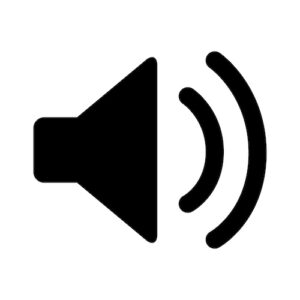Hearing loss is on the rise, and it’s not just among the over-65 demographic. Young people are experiencing noise-induced hearing loss, most likely from an increase in use of personal listening devices at high volume. Some people may not even realize they have hearing loss.
Assistive listening systems can help students hear clearly and understand in challenging listening environments at school. There are many great examples of assistive listening systems being used in campus settings to support better communication in classrooms, broadcast production departments, and school theaters.
Unfortunately, assistive listening systems in academic settings, particularly in higher education environments, often are underutilized because it can be inconvenient for students to obtain devices, or they may feel self-conscious about needing to use them.
Audio over Wi-Fi technology is democratizing assistive listening systems in education settings, and that’s great news for students and educators. With audio over Wi-Fi, users are able to stream live or recorded school audio to their smartphone or other smart device and listen via headphones or earbuds. They can even stream sound directly from their smart device to their Bluetooth-enabled hearing aids.
Imagine a teacher with a lapel mic talking to a full auditorium, a lecturer instructing students in multiple classrooms via Zoom, or an acting coach directing students on stage. In each instance, students can hear the speaker clearly using their own familiar device. They simply download a free audio over Wi-Fi assistive listening app on their smartphone, select the correct school audio channel (i.e., Room 14B, Professor Smith, Drama Department, etc.), and listen to pure sound delivered directly to their ears.
This is essential since classrooms can be challenging listening environments, even for students who do not have hearing loss. Background noises (from ventilation systems, spillover audio from other spaces, or even someone coughing or laughing), accents, face masks, and acoustics can make it difficult for a person with exceptional hearing to hear and understand every word that is spoken. Students using audio over Wi-Fi assistive listening technology can hear no matter where the audio source is in the school network. This means sound is not lost when an audio source is located at a great distance from the listener or when sound is directed away from students (a teacher turned toward a smartboard). There is no straining to hear or need to move closer to the speaker.
Free from distractions and able to hear well, students can optimize their experience and focus entirely on the lecture, instruction, video, performance, or other relevant school audio. Since the technology uses a device they likely already have in their pocket or bag, students are more apt to use it. (Schools and universities can purchase dedicated audio over Wi-Fi receivers for students who do not have a smartphone or prefer not to use their personal device.)
Smartphones are convenient, often readily available, familiar, and, perhaps most important, commonplace in academic settings. A student wearing earbuds may be listening to music, a podcast, or benefiting from assistive listening technology.
Audio over Wi-Fi systems also can be used for more than assistive listening. The systems are multi-channel, so they can be used for accessing audio channels featuring different languages or lessons. Imagine an educator teaching math to students at different levels in the same classroom. He can work through equations in real-time with a group of students while another group in the same space listens to audio he recorded earlier.
Beyond classroom settings, the technology can be used in campus fitness centers, dining halls, student unions, and other spaces featuring multiple video screens. Users can select the audio for their preferred video and listen from across the room. There is no need to crowd around a screen to hear the related audio. And people in the same space can converse without having to yell over TV audio or worry about preventing others from hearing what is broadcast from the screen.
As students head back to campus in the fall and schools consider ways to improve their experience and optimize learning, audio over Wi-Fi assistive listening systems present a cost-effective, easy, familiar way to help students and educators hear clearly and engage fully.
- AI and the workforce: Reskill to meet the moment - July 1, 2025
- Beyond the game: Why business expertise is the future of sports management - June 26, 2025
- How unified payment strategies drive student success - June 23, 2025
